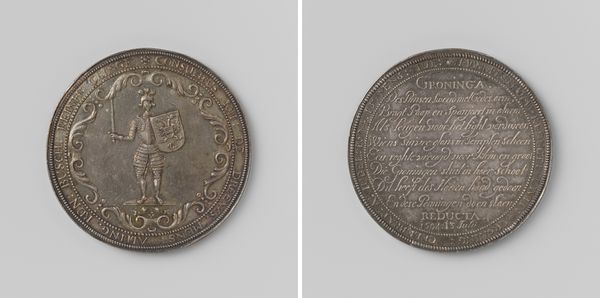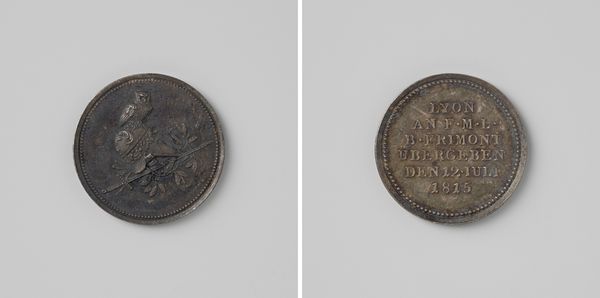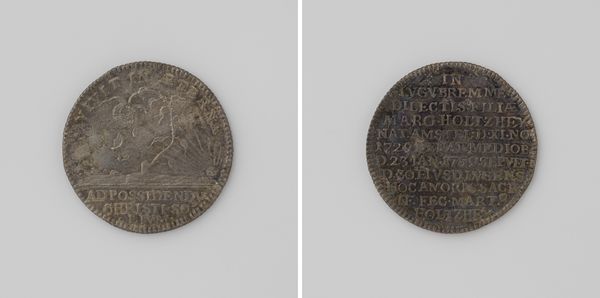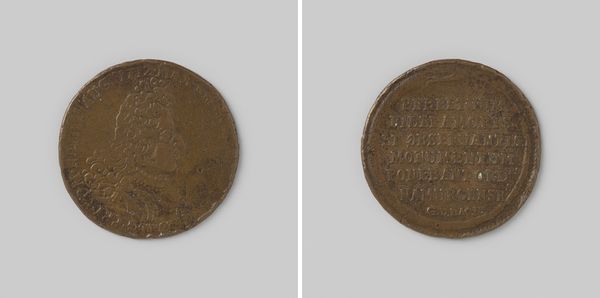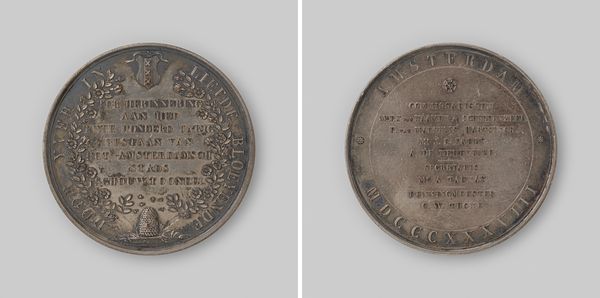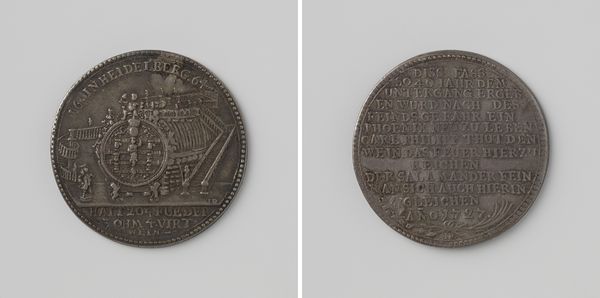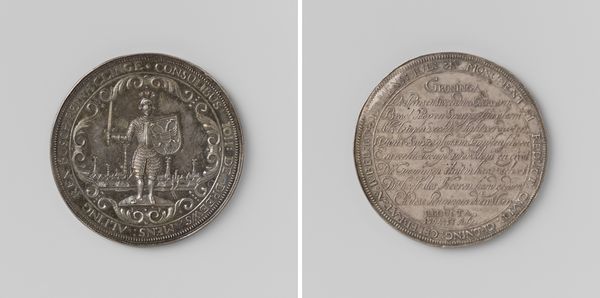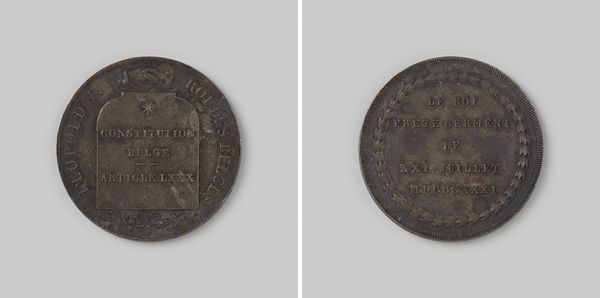
metal, relief, bronze
#
portrait
#
metal
#
relief
#
bronze
#
11_renaissance
#
history-painting
Dimensions: diameter 3.4 cm, weight 17.44 gr
Copyright: Rijks Museum: Open Domain
Curator: This bronze relief, created by Adolphe Jouvenel around 1821, commemorates the death of Simon Stevin. It’s currently held at the Rijksmuseum. Editor: The dark patina and circular form lend a somewhat somber, weighty feeling to the object. I'm immediately drawn to the intricate details etched into the metal—it’s amazing how much information and artistry is packed onto such a small surface. Curator: As a historical object, this relief embodies the reverence that emerged surrounding figures from the Dutch Golden Age, like Stevin. Remember, Stevin was no mere mathematician; he was integral to the Dutch military and engineering. Medals like this helped construct national identity through honoring important contributors to the Dutch state. Editor: Absolutely. We can view the piece itself as a form of propaganda. The portrait on one side certainly romanticizes Stevin, idealizing him and underscoring the historical weight. It makes me think about the power of visual representations in crafting legacies. I wonder how effectively it challenged or reinforced the contemporary societal expectations of male intellectual figures? Was there space, say, for dissent around the construction of such an important personality in society? Curator: It’s critical to consider what institutions helped shape the narrative around Stevin as well, like the learned societies and museums which collected and interpreted pieces like this, thus solidifying his place in history. How does its current placement in the Rijksmuseum impact how we perceive Stevin today? Editor: Indeed. And on the other side we see extensive text, practically enshrining him in prose. Who was the intended audience, and what access would the general public have had to these commemorations? It raises questions about elitism in the distribution of knowledge and the selective valorization of historical actors. I’d argue, that bronze relief participates in that exclusivity. Curator: The very choice of bronze, a durable material often associated with statuary and commemoration, further reinforces this idea of lasting legacy and enduring national pride. Its medium also dictated that many wouldn’t have seen or been able to touch this object and that makes me think of how few monuments represent the poor or laboring class, which Simon helped greatly through his invention and advocacy of decimal usage, yet it feels contradictory somehow. Editor: It definitely highlights how collective memory can be actively sculpted. This piece encourages us to examine the political and social factors that shaped our historical heroes—often complex, not always equitable ones.
Comments
No comments
Be the first to comment and join the conversation on the ultimate creative platform.
